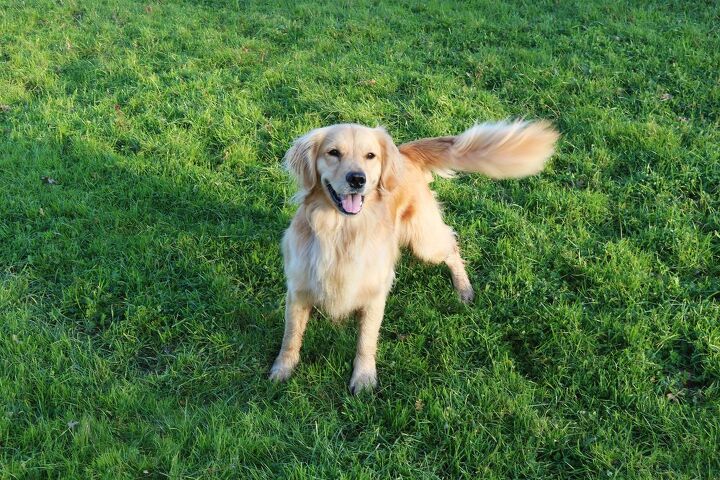Dogs Could Be Wagging Their Tails Because Ancient Humans Loved Rhythm

Doggos love to wag their tails and we love to see it. It is their way of expressing emotions, from unwavering joy and happiness to see you again after a long day at work to a shy greeting to a new face – there are many things a pooch can convey with a simple tail wag. But have you ever wondered why they do it exactly? Why didn’t dogs evolve to, let’s say, use their ears for nonverbal communication with us? Researchers were wondering the exact same thing, and their latest studies could provide a key insight into why dogs started wagging their tails in the first place.
Believe it or not, the origins of this action could potentially be traced to ancient humans who first domesticated dogs. And the study connects the human love of rhythm, with selective breeding and domestication!
Dogs were first domesticated by humans sometime between 15,000 and 50,000 years ago. It was a long time ago when dogs first emerged from domesticated wolves and similar canines but some of their ancestral traits, like tail wagging, remain the same. And researchers could finally have an answer for this behavior.
“We may not be able to take a time machine back to the beginning of the dog-human relationship, but we can look at dog behavior today in tandem with human behavior to try and understand what that domestication process looked like,” said Dr. Taylor Hersh from Max Planck Institute for Psycholinguistics in the Netherlands. “Tail wagging is a very apparent and interesting behavior to start with.”
Of course, this is not the first such study, and in the past, many have questioned the wagging of tails. Previously, it was found that hand-reared dog pups will wag their tails far more often than hand-reared wolf pups, showing the clear difference between domesticated and wild animals. Likewise, it was discovered that dogs wag their tails to the right mostly in response to positive experiences, usually when seeing their owners. And they’d wag them to the left in potentially aggressive situations.
And now, researchers linked this behavior to the ancient process of domestication. This means that dog tail wagging has developed because dogs have an inherent genetic link towards behaviors that humans want - like tameness and docility.
“We put forth a new hypothesis that humans consciously or unconsciously selected for tail wagging during the domestication process because we are very attracted to rhythmic stimuli,” said Silvia Leonetti, another member of the team.
Ancient humans had a very distinct attraction to rhythm and rhythmic actions, so there could be a very logical link here. Dr. Holly Root-Gutteridge, a dog researcher at the University of Lincoln, also proposed that tail wagging was developed during the long domestication process as an adaptation by the dogs, as humans likely found barking irritating.
“We’re a highly visual species and may appreciate the rhythm, it’s an interesting thought that should be explored, though I’m not sure we’re really responding that much to it,” she said. What is more, she added that wolves too wag their tails in certain situations in the wild. “I suspect ancestral humans saw tail wags as a positive, easy to read sign in wolves, and developed it the way we talk with our hands – as a communicative gesture that we can easily understand.”

A proud mama to seven dogs and ten cats, Angela spends her days writing for her fellow pet parents and pampering her furballs, all of whom are rescues. When she's not gushing over her adorable cats or playing with her dogs, she can be found curled up with a good fantasy book.
More by Angela Vuckovic























